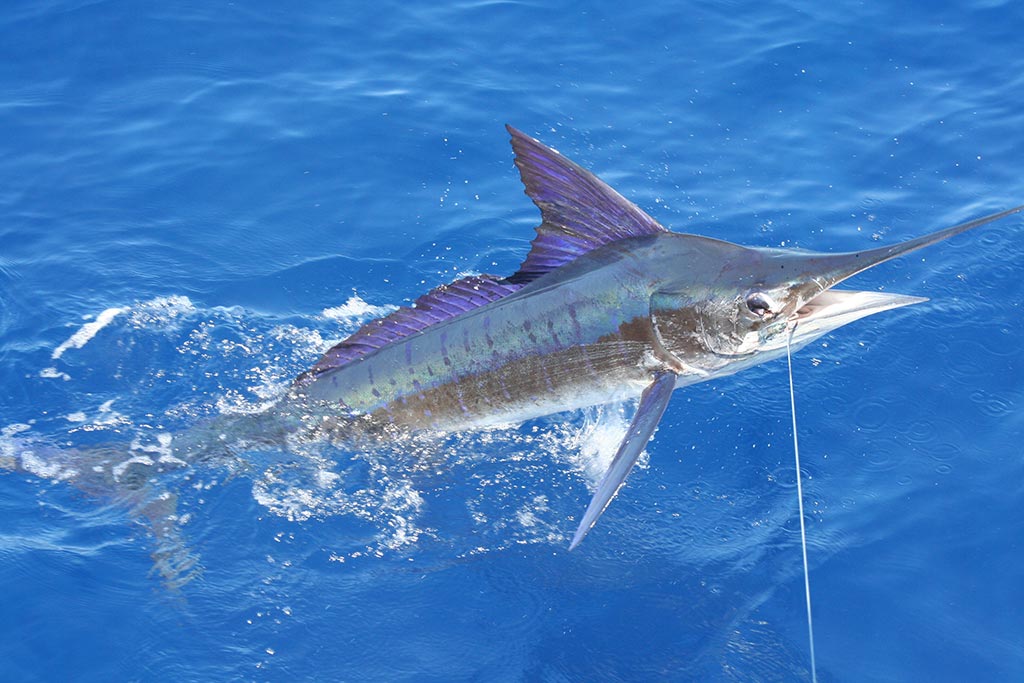Living in Waimea means spending your days in one of the sweetest places on earth. For starters, our village is located at over 2000 feet above sea level, so you’ll never see Waimea people suffering sidewalks hot enough to fry an egg! We are in a breezy place too. The trade winds must squeeze themselves between the proud shoulders of Mount Haleakala and the gigantic bulk of lofty Mauna Kea, often picking up 10 or 20 miles and hour in the process. What this means to Waimea people is that the skies are swept so clean that it seems like the stars might actually fall to earth! It also means no mosquitoes, which is fine with me. Some people say God can’t make any mistakes, and maybe that is true, but what about the mosquito?
We are located in one of the cleanest environments possible, surrounded by over 2000 miles of ocean air containing little more than towering masses of brilliant, white clouds floating like meringue across the blue mirror of the north Pacific. Exhaust fumes and volcanic fog are blown away from our brilliant green hills along with the day’s arguments and worries, and each night is a new opportunity to settle our hearts, rest our bones and pray for the souls of those we hold dear. So why are lights winking on at 4:00 AM and guys stumbling around trying to be quiet?
The reason is that Waimea lies just above one of the most exciting fishing grounds on earth. The incredibly deep and clear waters that gather in the lee of the Big Island are a perfect oasis for the massive schools of skipjack that hunt and terrorize the boundless reaches of the North Pacific. As the enormous plumes of warm equatorial water flood northward under the relentless beating of the tropical sun, these great hunters arrive in the Hawaiian archipelago. Almost anywhere else in the United States a 20-pound skipjack, which we call aku, would be a pretty good catch, but in Hawaii it may well be used for bait!
Following the aku are schools of Allisons yellow-fin tuna, that we call ahi, and they are some of the toughest fighting fish on earth. Just last weekend there was a tournament for the little trailer boats, as opposed to the big charter boats, and over 200 little skiffs assembled in Kailua Bay to fish in the Wee Guys annual fishing tournament. Most of those fishermen were hoping for an ahi, and quite a few caught them! Some of the ahi caught this year have been well over 200 pounds a piece and easily capable of taking care of themselves … almost.
Trailing these thundering, golden schools of ahi are the giant, predatory Pacific Blue marlin. The Pacific Blue marlin is arguably the most violent creature on earth, and they grow large enough to swallow huge ahi whole! Really big marlin weigh over 1000 pounds and are less rare than you might think, but catching a marlin of even 500 pounds is a great and dangerous challenge. There are quite a few boats in Kona that have suffered from marlin attacks and bear deep scars where a fish’s bill has been rammed through the sides of the boat!
The Pacific Blue marlin is built for speed, violence and killing power. It has no life other than eating, sleeping and attacking. It is built like a rocket with a solid bone javelin attached one end and an incredibly powerful tail at the other. These animals are so dangerous that deck hands have to be specially trained before being allowed to help handle them. Even so, several times a year crewmates are badly injured or dragged overboard by making little mistakes!
Most of us only see pictures of dead marlin hanging forlornly from winches with happy anglers grouped together for the photo. We don’t get to see what they look like in all of their electric brilliance. When a marlin gets excited its skin lights up with a complex pattern of neon blue, silver and black! This bright visual display confuses its prey, but it brings cries of amazement from those of us lucky enough to see it!
If you are fishing for marlin, and one of them takes your trolling lure or bait, you will be in for the most exciting fishing experience of your life! The rod will slam down, and the reel will shriek with line shooting out at impossible speed. Just imagine that you have hooked a motorcycle heading for the horizon at full speed!
When I was growing up it was the fisherman, the angler, who fought the fish, and it was truly something to be proud of. Now they makes boats that can almost as fast in reverse as they do in forward, so the marlin can be chased down quickly with the angler doing little more than reeling as fast as he can. The great tug-of-war has gone out of the sport.
Fighting a marlin, as we still do, can take hours of slow struggle with exasperating disappointments before the animal is finally tired enough to lie at boat side to be tagged and released. My daughter caught a good one a few summers ago, and her sisters were aboard to cheer her on. When the big blue was finally in hand, each of the girls knelt at the gunnels to feel the fish before we let her return to rest and recover. She was actually hot to the touch, just as any great athlete would be.
This too is part of living in Waimea for so many of us, who get up in the dark, trying not to wake the others as we bumble around the house long before dawn. The ocean calls to us as surely as the high pastures and the hallowed vaults of the rain forest.

